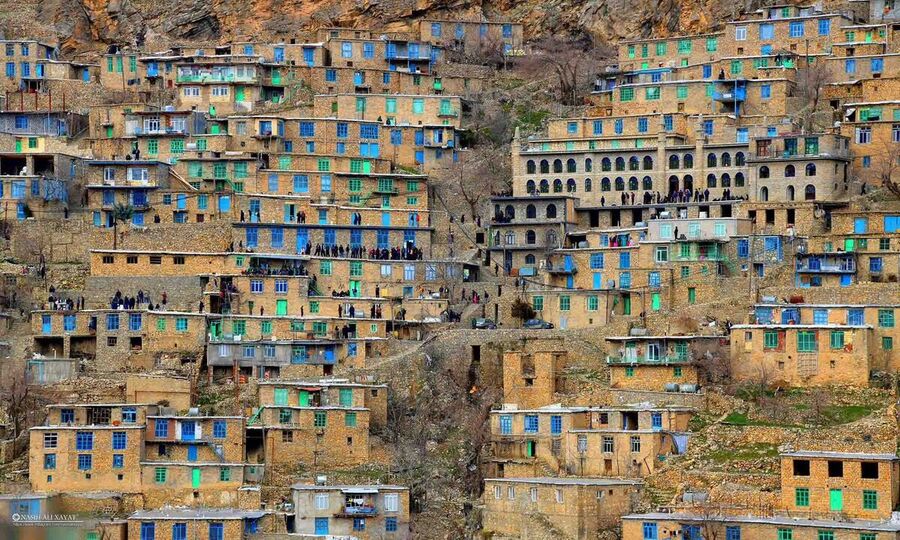Geography of Hawraman
Hawraman is a mountainous tourist region of Kurdistan, located between the Kermashan and Sna (Sanandaj) provinces in the eastern part of Kurdistan, Iran, and Halabja province in the southern part of Kurdistan. It has its own historical, cultural, and linguistic characteristics.
Hawraman region consists of several parts: Zhawaro, Gawaro, Razaw and Kamara, Lhon, Dzli, and Hawraman Takht.
Hawraman is very rich in folklore and has its own music and costumes. Most of the people of Hawraman speak Kurdish and the Hawrami dialect. Pawa (Paveh), Notsha (or Nodsha) (Nodsheh), and Hawraman Takht in the East part of Kurdistan, and Tawela and Byara in the South part of Kurdistan are the urban centers of Hawraman.
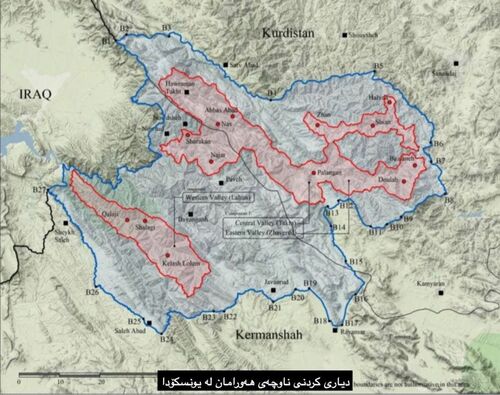
Hawraman is a Kurdish region in the center of Kurdistan. It is full of mountains, valleys, and slopes. There are very few plains and Hawraman's heights are part of the Zagros Mountains. The mountains are between 1270 and 3390 meters high. The nature of the area has disabled people to organize land for agriculture and gardens in these mountains, and that is why their gardens are loved by them and the people are known for their hard work.
Hawraman is about 700-3000 m above sea level in both the East and South parts of Kurdistan. It covers an area of about 3000-3500 square kilometers.
Hawraman is a small region within the framework of Greater Kurdistan that has its own symbol in the field of culture, economy, and art. Due to its location in the mountains and difficult areas, this region is fixed in shape and is not able to expand and develop more than it already has, which is why it has created its own geographical characteristics. However, a large number of Hawraman's people have migrated to areas outside Hawraman, especially in the cities of Mariwan and Sna in the East part of Kurdistan, and Halabja, Khurmal, and Sulaimani in the South part of Kurdistan.
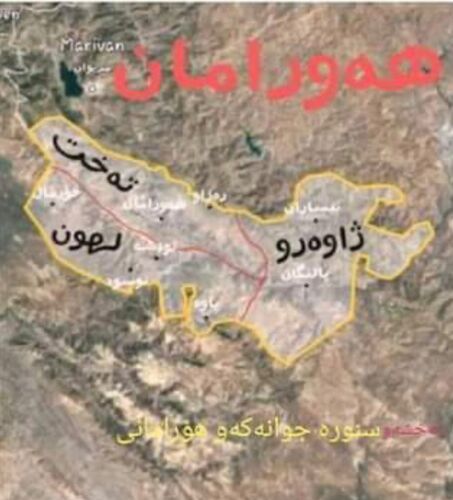
Weather of Hawraman
1. In spring, it is pleasantly rainy and has beautiful nature. In spring, the people of Hawraman are very busy with their gardens, especially their gardeners are repairing, planting, and sowing seeds.
2. Hawraman has a moderate and cool climate in summer.
3. In autumn, the long autumn due to the defoliation of the gardens, gives a pleasant and sad atmosphere to the area. From the beginning, the people of the area collected crops and brought them to their homes.
4. In winter, it rains a lot and in February and January, the whole area is white with snow, and the temperature sometimes drops to nearly 10 degrees below zero. People in Hawraman villages cannot work in winter due to cold and snow. Also, because they could not graze their animals in this season because of the snow, they have to collect enough forage and grass in the summer to keep them alive for that long time. Of course, this is a very difficult task for animal breeding.
The people of Hawraman have been settled in the region throughout history and have adapted to the life of their region. They have never camped like other ethnic groups in Kurdistan in summer or winter.
Since the beginning of its formation and development, Hawraman has had its own Kurdish clothes and traditional Kurdish clothes that even do daily tasks in Kurdish clothes and has Klash (Kurdish shoes), which are handmade shoes specific to the region. It is also suitable for Kurdish clothes.
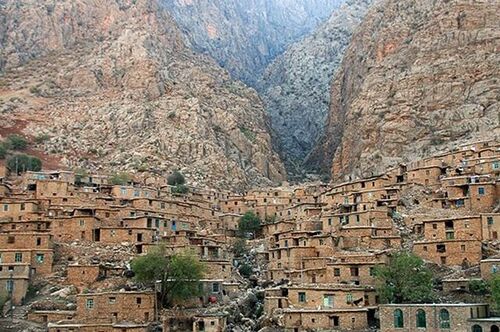
Artistic Aspects in Hawraman
If we look at the artistic aspect of Hawraman of Kurdistan, we see that they have their own music, the most special of which is Siachamana. Experts believe that the music and songs of Hawraman originated from the sound of wind, rain, streams, rivers, and creatures that may have changed a lot like the history of the Kurdish people. Then, by imitating these sounds, the Kurdish people have created a harmony between their inventions and natural phenomena. This situation has gradually been reflected in their joys and sorrows.
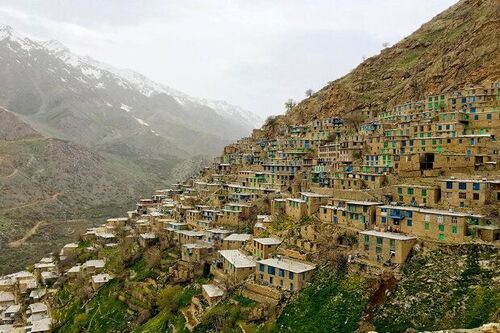
A brief history of Hawraman
Anyone who goes to Hawraman knows that it has a very old history and has been a place of war, problems, and competition, especially during the time of local rulers and the power of the Baban, Ardalan, and Qzilbash, Ottoman, and Safavid attacks. It is said that due to the difficulty of the region during the invasion of Alexander the Great, Hawraman was a jail for prisoners of war and criminals of the king.
One of the regions that participated in the proclamation of the Kurdistan Republic in various ways and expressed its support for the Kurdistan Republic was Hawraman.
The people of the Hawraman region have never been so easily submitted to any political hegemony or religious belief, and history has confirmed this attitude of the people of Hawraman.
Three thousand years ago, from the time of the Ashkanides and Ardavan IV until the arrival of Islam in the region, parliamentary elections were held every four years on both sides of Hawraman. The parliament of Hawraman was called Zhirle u Mare, meaning the Council of the Wise.
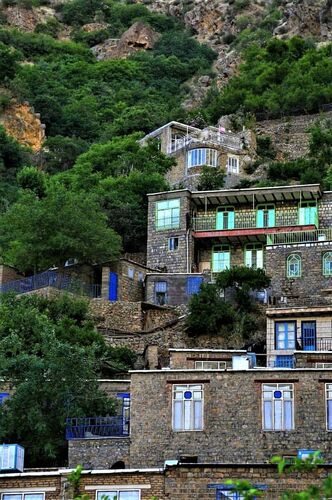
The name of Hawraman
Some scholars say that the word Hawraman comes from Uraman, which means Ura, meaning a heavy wall or fortress, and Mani, which means a place, house, and residence. So Hawraman means difficult settlement or difficult settlement area.
There is another opinion that Hawraman comes from "Ahuraman" meaning the place of Ahura Mazda, the god of Zoroastrianism.
Some other people believe that Hawraman comes from two compound words "hawar + aman", meaning: secure place.
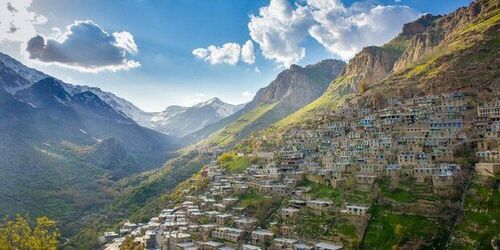
Hawraman World Register
The 44th session of the UNESCO World Heritage Committee has registered the Hawraman region of Kurdistan as a World Heritage Site. In order for Hawraman to be registered by UNESCO, the people of the region collected the necessary documents for the meeting of the UNESCO Cultural Heritage Committee. The meeting was held online in Fuzhou, China, and Hawraman was recognized as a valuable heritage for humanity.

